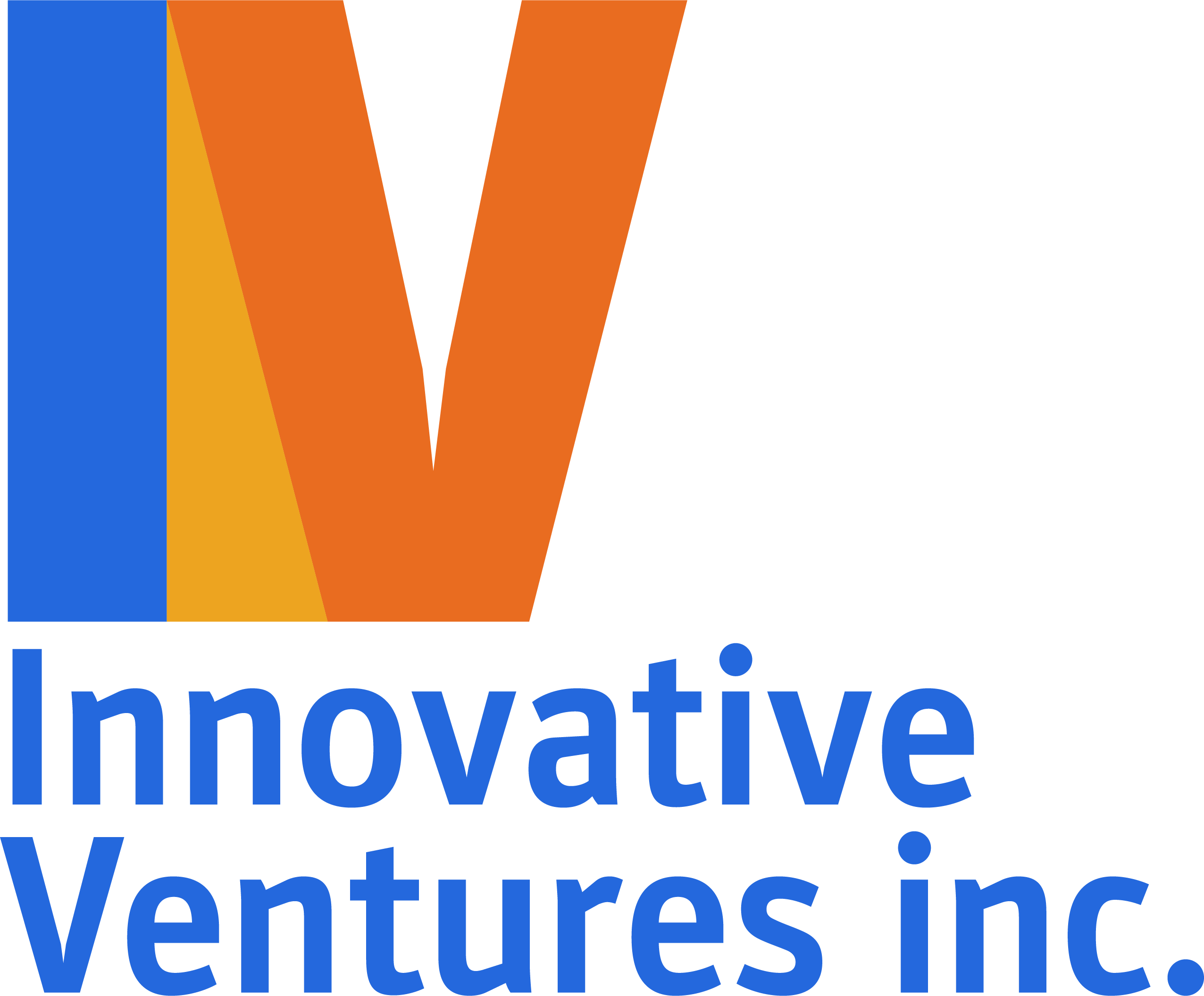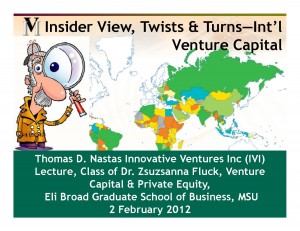On 2 February I spoke to graduate and undergraduate students of Dr. Zsuzsanna Fluck at Michigan State University (MSU). Zsuzsanna teaches graduate and undergraduate courses in private equity and venture capital at the Eli Broad Graduate School of Business. Zsuzsanna is also the director of MSU’s Center for Venture Capital, Private Equity & Entrepreneurial Finance. A few weeks ago I delivered this same lecture to graduate students enrolled in the private equity class of Dr. David Brophy, Ross Graduate School of Business at the University of Michigan.
MSU is on an ambitious journey to build a more vibrant entrepreneurial community in mid-Michigan. MSU has new programs and new money commitments to encourage start-ups from university technology, under the leadership of Charles Hasemann and Ian Gray, VP of Research. All the best to them in this endeavor.
Zsuzsanna was born and raised in Hungary. As an economist she worked on international joint ventures and then moved to the US to pursue doctoral studies in economics and finance. She and I talked extensively about the parallels of entrepreneurship between Hungary and Michigan, the perils that entrepreneurs from both face in capitalizing their businesses, and lessons they can learn from one another to do more-faster.
Silicon Valley’s greatest strengths are its comfort with risk, ambiguity and uncertainty; Valley investors willingly pay the costs of failure when business models don’t work, founders pivot & models evolve into something different from entrepreneurs’ initial intentions. This willingness to finance the wild and crazy is what attracts entrepreneurs to the Valley with gamechanging ideas that develop into businesses that truly change the world. These successes draw more investors and their money to these entrepreneurs, and the cycle repeats. As this happens over and over, the ecosystem lives, breathes and renews itself from one economic cycle to another.
Michigan entrepreneurs and its venture investors are more conservative, due to the culture that developed around the auto industry and its supply chain. Ways of doing business that flow from one industry that dominate a region or country’s economy often leads to an investment culture that rejects early stage innovation, the untested and undeveloped ideas of innovators and entrepreneurs that makes Silicon Valley, uhm, Silicon Valley.
Decades ago I worked in engineering at Ford Motor Company, and new innovation had to be well proven before it worked its way into cars and trucks. If technology failed on the road, people can get hurt or die, risk unacceptable to all; in such circumstances the risks of failure are logical and understandable. While times are changing, such thinking created a culture and way of doing business and investing directly opposite to the risk appetite in Silicon Valley. Conservatism to risk does not make Michigan and like-minded Rust Belt states bad, just different.
Except for the very few, most investors in developing countries approach risk differently than Silicon Valley. They invest in known and understandable risks, mainly the risks of execution. These are the uncertainties they have dealt with as businessmen and investors, and have the experience to help entrepreneurs solve—avoid. The risks of financing innovative firms, i.e., will customers buy, are profits possible, achieve promised performance from new ideas – often technology based – is simply too much for them. While the risk appetite of Midwest investors is greater than their counterparts in emerging markets, they share more commonalities than differences due to shared values toward uncertainty, ambiguity and failure.
So specifically, what actions can entrepreneurs and participants in the local ecosystem execute to create a more risk friendly venture community? Let me suggest two:
- Mentor entrepreneurs to ‘Sell Risk, then Opportunity.’ The prelude to this is of course the building of business models that sell risk and opportunity by incorporating cultural attitudes to risk and failure since they drive investment decisions & the entrepreneurial process in the local community.
- Entrepreneurial ventures need ‘spark points’ to capture the attention of the market, users, and investors. While spark points are easy to see in hindsight vs. foresight, they frequently result when overcoming the friction that exists in commercialization, leading to minor revenue, but huge leaps in confidence. Keep the eyes of your entrepreneurs open to these accomplishments and transform them into events that are publicized to the market.
I’ll be writing about these subjects in future posts so stay tuned for more.
In my next posting I’ll comment on the Kauffman Foundation proposal (taxes & capital gains) as a solution to finance the ‘Valley of Death.’
Comments, opinions welcome here or send directly to me at Tom@IVIpe.com.
Be well and be lucky.

